-
Out of stock
 Also known as mountain spinach, this green has been cultivated since Roman times. Harvest young leaves 3-7 cm long for fresh use. Larger leaves are often used steamed. A colorful and nutritious addition to salads. Leaves can continue to be harvested until the plant goes to seed. Can be grown into summer somewhat longer than true spinach. Germinated in 7-14 days. Maturity from 20 to 60 days.
Also known as mountain spinach, this green has been cultivated since Roman times. Harvest young leaves 3-7 cm long for fresh use. Larger leaves are often used steamed. A colorful and nutritious addition to salads. Leaves can continue to be harvested until the plant goes to seed. Can be grown into summer somewhat longer than true spinach. Germinated in 7-14 days. Maturity from 20 to 60 days. -
Out of stock
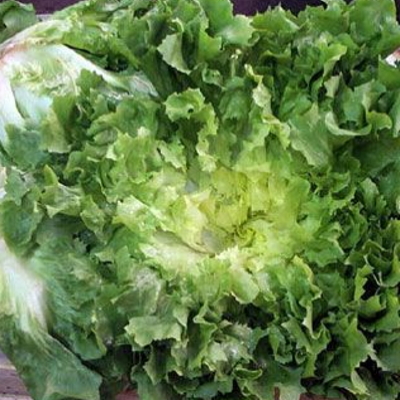 This escarole type of endive has dark green leaves that are broad, coarse and crumpled in appearance but not curly. Popular as an addition to any salad or may be cooked as greens. Harvest as you would lettuce by cutting them just below the lower leaves. They will withstand a touch of frost but not a hard freeze.
This escarole type of endive has dark green leaves that are broad, coarse and crumpled in appearance but not curly. Popular as an addition to any salad or may be cooked as greens. Harvest as you would lettuce by cutting them just below the lower leaves. They will withstand a touch of frost but not a hard freeze. -
Out of stock
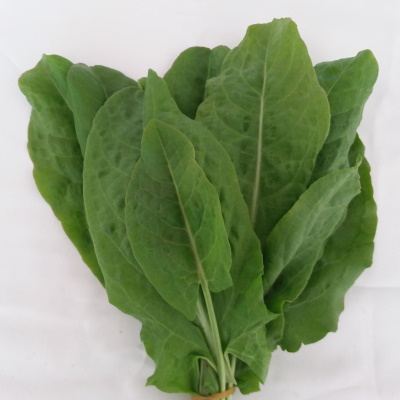
The herbal lemony flavor of sorrel makes a great addition to salads, sauces, or soups. A famed companion to fish. Will produce the most tender leaves in cool weather. Sow in spring or fall. Once established, can be propagated by root division. Hardy in zone 4-8. Perennial.
-
Out of stock

A stellar bulbing Florence fennel with an excellent sweet anise-like flavor that mellows with cooking. Selma Fino is usually the sweetest tasting. Takes about 80 days to form full-sized bulbs, however, it can be harvested sooner at a smaller size. Very white bulbs are fairly uniform and won’t prematurely bolt if planted in spring. Tops can be used as a fresh herb, adding a mellow fennel flavor to dishes or salads. Unique compared to other bulb type fennel, some plants have a perennial nature. The flowers are highly attractive to bees and other beneficial insects. Fennel leaves, florets, and seeds can be used for culinary purposes as an herb.
-
Out of stock
 A much-loved heirloom cabbage with solidly tight, conical, folded heads 13-18cm in diameter, and 26-39cm tall. Planted individually, Early Jersey Wakefield cabbage seeds will form a plant up to 1m in diameter. This cabbage has smooth, thick green leaves that are perfect for coleslaw. They can be harvested in summer or overwintered, and they resist splitting in wet weather. Early Jersey Wakefield cabbage seeds were first grown in the U.S. by Francis Brill of Jersey City in 1840.
A much-loved heirloom cabbage with solidly tight, conical, folded heads 13-18cm in diameter, and 26-39cm tall. Planted individually, Early Jersey Wakefield cabbage seeds will form a plant up to 1m in diameter. This cabbage has smooth, thick green leaves that are perfect for coleslaw. They can be harvested in summer or overwintered, and they resist splitting in wet weather. Early Jersey Wakefield cabbage seeds were first grown in the U.S. by Francis Brill of Jersey City in 1840. -
-
Out of stock
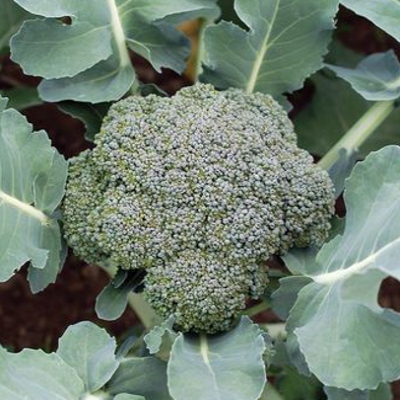 Blue Winds Broccoli is the most popular broccoli. This extra-early maturing broccoli produces impressively large, tightly beaded heads. The large plants are tightly beaded and sport powdery light blue foliage. They have strong-stems with densely packed heads. After harvesting of main head, Blue Winds Brocolli has good side shoot production will supply a continued harvest of delicious florets! One of the only hybrid crops we grow!
Blue Winds Broccoli is the most popular broccoli. This extra-early maturing broccoli produces impressively large, tightly beaded heads. The large plants are tightly beaded and sport powdery light blue foliage. They have strong-stems with densely packed heads. After harvesting of main head, Blue Winds Brocolli has good side shoot production will supply a continued harvest of delicious florets! One of the only hybrid crops we grow! -
Out of stock
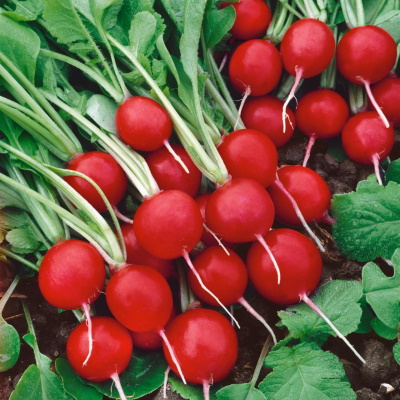
Early, organic, round red radish.
Try leaving some to grow seed pods which are delicious in salads or save your seeds for future plantings. Radishes thrive in very loose rich soil, plenty of water, and best grown in cooler weather.Roots are bright red, smooth, and uniform with good flavor. Best for spring and fall plantings. Crops sown in hot weather tend to produce roots that are less uniform and become pithy earlier than hybrids.
-
Out of stock
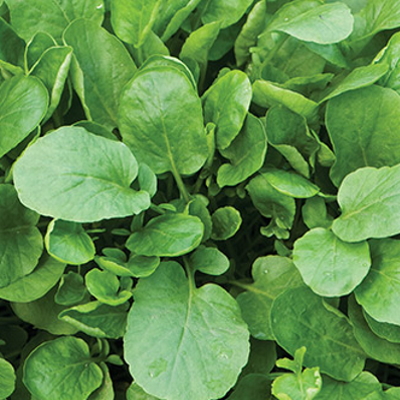
Upland Cress is slow to start but, once established, easy to grow. Long-standing and slow bolting. Harvest by cutting individual leaves or by picking the 15-18 cm rosettes of dark green, glossy, rounded leaves. Salad's come to life with the nutrient-packed upland cress leaves added. Cut the leaves when they are 2-5 cm tall. The leaves grow back in 2-3 weeks. Harvest as desired through the growing season.
Many common names of Barbarea verna are )Upland or Winter Cress), Early Yellow-rocket, Early Yellowrocket, Land Cress, Peppergrass, Upland Cress, Winter Cress -
Out of stock
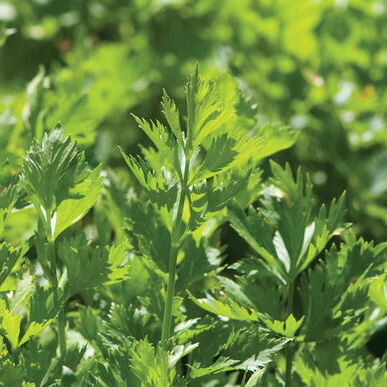
Leafy herb with bold celery flavor. Easier to grow than standard celery. A versatile ingredient for salads, soups, stews, and vegetable medleys. More intense flavour (both fresh and dried) than garden celery.
-
Out of stock
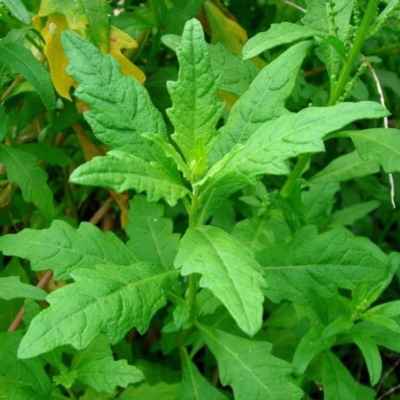
This annual Mexican herb has a pungent aroma, spear-shaped, deeply toothed leaves, and green flowers. It is also known as Wormseed, American Wormseed, Mexican Tea or Herba Sancti Mariae. Epazote's (eh-pah-ZOH-teh) fragrance is strong and pungent. It has been compared to citrus, petroleum, savory, mint, or camphor. It smells pretty strong, but we have found that it does add a wonderful depth of flavor to a pot of beans! With its strong taste and aroma, not everyone takes to it right away, but used as a spice, it adds a wonderful rustic layer of flavor to many Mexican and Latin American dishes, giving them an extra dimension of flavor that just can’t be replicated with any other herb – very similar to the “umami” flavors of fermented Asian ingredients. Epazote leaves are used for their pungent flavor and aroma to season soup, corn, beans, and shellfish in Mexico. It is used in beans to prevent flatulence. It is also brewed for "Jesuit Tea" but the herb's main use is to expel intestinal worms from humans and animals. Oil of chenopodium is derived from this plan.
-
Out of stock
 There is a very good reason why Red Salad Bowl is among the most popular lettuces. Red Salad Bowl is a variety of looseleaf lettuce with oakleaf type leaves. The deep red and purple leaves are especially tender, with sweet and spicy tones. Red Salad Bowl is best grown during the cooler portions of the growing season in spring or fall, though it is slow to bolt in warmer conditions. The leaves are commonly used in salads. The baby greens can first be harvested approximately 25 days after germinating. Try growing some in containers,
There is a very good reason why Red Salad Bowl is among the most popular lettuces. Red Salad Bowl is a variety of looseleaf lettuce with oakleaf type leaves. The deep red and purple leaves are especially tender, with sweet and spicy tones. Red Salad Bowl is best grown during the cooler portions of the growing season in spring or fall, though it is slow to bolt in warmer conditions. The leaves are commonly used in salads. The baby greens can first be harvested approximately 25 days after germinating. Try growing some in containers,
